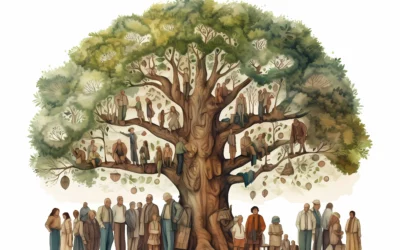Written by Christine Cooke Fairbanks
June 26, 2024
- Love Notes is a ready-made, evidence-based curriculum that directly teaches the success sequence.
- The curriculum also offers supporting lessons on relationships and parenthood that fit within existing Utah health standards.

As part of Sutherland Institute’s efforts to help the state identify ways to incorporate the “success sequence” into education for grades 6-12, we are reviewing existing curriculum that could assist Utah education leaders in doing just this.
Below we take a closer look at The Dibble Institute’s Love Notes.
What is Love Notes curriculum?
Love Notes is a curriculum created by The Dibble Institute aimed at helping kids create healthy relationships. The Dibble Institute was founded in 1996 by Charles Dibble, who worked to create community resources on self-esteem and confidence and then eventually on successful marriages. Today its work focuses on relationships and their impacts on many aspects of our lives, including love and work.
The Love Notes curriculum is evidence-based. It was evaluated by a five-year study through the University of Louisville, showing encouraging results including “decreases in sexual activity, increases in condom and contraceptive use, and avoidance of pregnancy (46% less likely).” The Office of Adolescent Health’s Evidence Based Program list gives it an overall “moderate” quality rating.
The newest hard copy edition of the participant journal (version 4.0) published last year discusses relationships in light of the most current issues facing students today, including: social media, human trafficking, online pornography, consent, and the role of digital technology on relationships. It is aimed at older teens most vulnerable to the impacts of “unplanned pregnancy, single parenting and troubled relationships.”
The Love Notes participant journal offers lessons and is meant to be a hands-on workbook with reflective quizzes and writing prompts on many topics.
Chapters include topics like first developing a vision of what you hope a relationship to look like and defining what is most important to the individual. Other topics include expectations, maturity scale, attraction, communication, respect, decision-making, pacing of relationships, sex and different forms of intimacy, how to approach arguments, parenthood goals, and more.
Overall, the content would help students make intentional decisions about the future they want, the relationships they hope for, and how those impact each other.
How does it fit Utah?
Importantly, one chapter titled “Pathways and Sequences Towards Success” discusses the outcomes of the success sequence, which is an evidence-based set of decisions that, when implemented in young people’s lives, helped 97% of individuals avoid poverty. The “sequence” of decisions is: graduating from high school, getting a full-time job, and marrying before having children.
To highlight the importance of the third step (marrying before having children) the chapter shows the varying benefits of different degrees of the success sequences being followed. One visual shows simply getting a diploma plus finding full-time work, both of which can improve an individual’s odds of avoiding poverty. The next is a diploma, full-time work, and then marriage. But it is the third visual that has the most benefits, which is diploma, full-time work, and marriage before any kids.
There is even a version for those who are already young parents, suggesting students still pursue diploma, full-time work and marriage before any additional children. This approach helps students see the positive impacts of the full success sequence while also addressing those who did not follow it already at a young age.
Because this book is geared toward any youth who may already be expecting or have a child, it shows the ability to pick up on the success sequence and live out what they can today.
For education leaders seeking ways to implement the ideas of the joint resolution on the success sequence – which encourages districts to find ways to bring this concept into instruction – this curriculum teaches the success sequence directly.
The curriculum also offers supporting lessons on relationships and parenthood that fit within Utah’s academic standards especially in the health courses, specifically:
Standard HI. HD.3/ Standard HII.HD.2: Define and describe the mental, emotional, physical, and social benefits of practicing sexual abstinence;
Standard HI.HD.8: Recognize characteristics of healthy and unhealthy relationships;
Standard HII.HD.3: Explain the process of conception, fetal development and birth, practices for a healthy pregnancy, pregnancy prevention, and parenting responsibilities;
Standard HII.HD.8: Recognize characteristics of healthy relationships, the impact a relationship has on wellness, practice skills to build healthy relationships, and emphasize the responsibility within families and communities to support healthy relationships.
Conclusion
Love Notes is a ready-made, evidence-based curriculum that directly teaches the success sequence and matches several of the Utah state health standards with regard to relationships and human development.
Districts that are looking for resources might consider Love Notes as an option.
State board members tasked with identifying ways to implement the success sequence into standards could consider creating a standard that directly prompts a discussion of the success sequence and/or add to standards that exist on healthy relationships that relate to timing of parenthood.
In general, Love Notes is worth a look by Utah education leaders.

Insights: analysis, research, and informed commentary from Sutherland experts. For elected officials and public policy professionals.

- Love Notes is a ready-made, evidence-based curriculum that directly teaches the success sequence.
- The curriculum also offers supporting lessons on relationships and parenthood that fit within existing Utah health standards.
Read More
App store regulations are necessary, constitutional, and popular
In the absence of age verification requirements, there are no limitations on what apps children or youth can download. This raises at least two significant concerns.
The (AI) doctor will see you now? Exploring the potential of artificial intelligence in healthcare
Could AI replace your doctor or simply help them better do their jobs?
How 16 Utah school districts are strengthening parental partnership through online access
Parents and schools are better education partners when schools provide parents with access to curriculum information and parents effectively utilize it to support their students.


